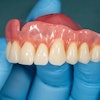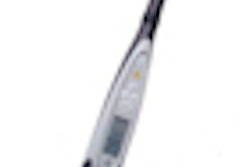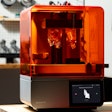The Diagnodent pen (KaVo Dental), a laser fluorescence caries-detection device, may not be suitable for monitoring noncavitated approximal lesions in primary molars, according to researchers from Universidade de São Paulo (Journal of Dentistry, August 2010, Vol. 38:8, pp. 666-670).
Two examiners used the Diagnodent pen to assess 123 approximal surfaces of primary molars. Surfaces were determined to be either sound with white-spot lesions or to have small cavitations. After sectioning, lesion depth was determined through polarized light microscopy. Spearman correlation coefficients (Rs) were calculated between the pen readings and lesion depth.
Correlation between pen values and lesion depth was low for both examiners (Rs = 0.36 and 0.51), especially when cavitated lesions were excluded from the analysis (Rs = 0.22 and 0.40). For all surfaces, intraclass correlation coefficient analysis revealed intra- and interexaminer reproducibility values of 0.75 and 0.63, respectively, but when only noncavitated surfaces were analyzed, these values decreased (0.41 and 0.33, respectively).
The laser fluorescence pen readings present low correlation with approximal caries lesion depth and low reproducibility, especially in white-spot lesions, the researchers concluded.
Copyright © 2010 DrBicuspid.com



















